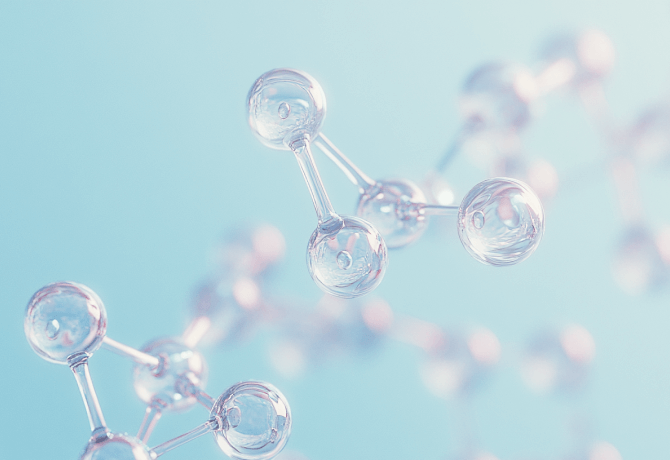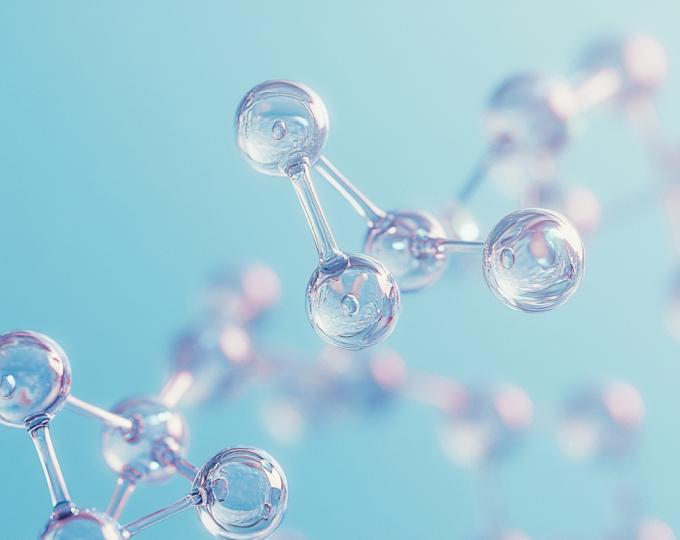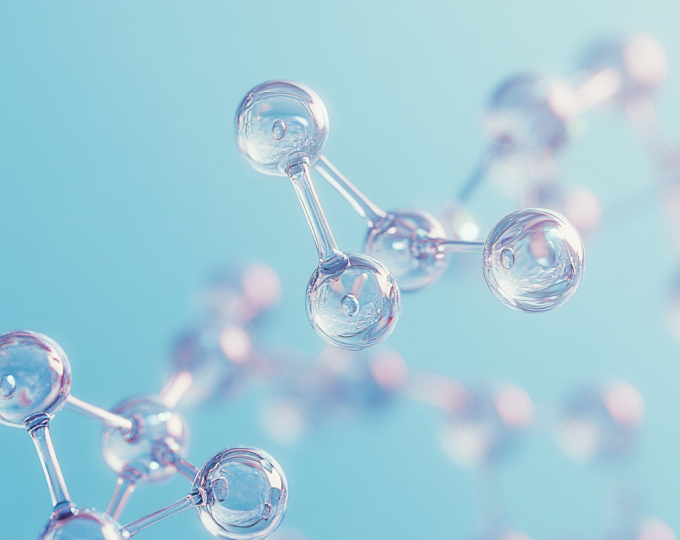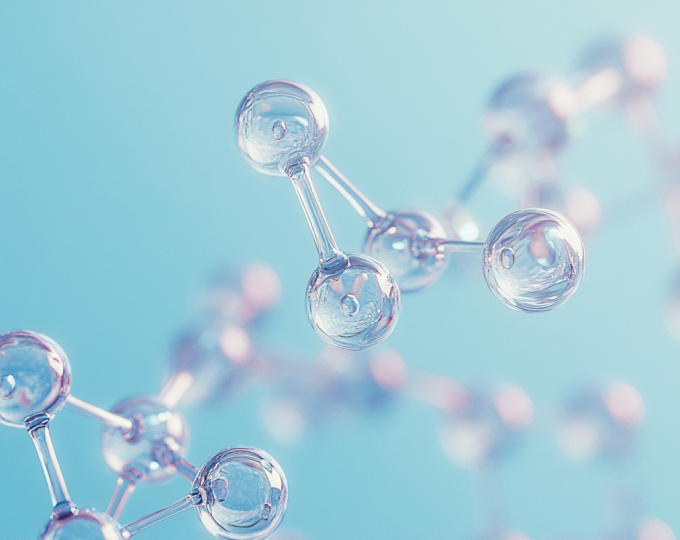Themen dieses Blogartikels:
Table of contents
- What are amino acids?
- Structure and formation of amino acids and proteins
- Amino acids become proteins: Protein biosynthesis simply explained
- Non-proteinogenic amino acids
- Essential and non-essential amino acids
- Which essential and non-essential amino acids are there?
- That's why the body needs essential amino acids
- What happens when there is an amino acid deficiency?
- Consume amino acids through food: These foods are essential
- Complete and incomplete proteins
- Supplementing amino acids – but how?
- Protein powder: Is it the same as amino acids?
- EAA or BCAA?
- Consider cofactors for amino acid metabolism
- Our recommendation for handling amino acids
- Sources & Bibliography
What are amino acids?
Amino acids are the smallest building blocks of proteins in all living things. They are also known as the "building blocks of life". The nitrogen-containing protein building blocks are the basis for proteins, hormones and neurotransmitters (messenger substances). Cells and tissues also consist largely of amino acids, which, along with water, make up the main substance of the human organism.
Amino acids are responsible for the transport of nutrients and are involved in many metabolic processes. Organs such as the heart or thyroid are therefore dependent on a sufficient supply of amino acids. Proteins also contribute, among other things,
- to increase bone and muscle mass,
- to maintain muscles,
- for wound healing and regeneration after injuries and contributes to the repair of tissues such as bone or skin
Structure and formation of amino acids & proteins
Chemically speaking, amino acids are organic compounds and consist of a central carbon atom (C), an amino group (-NH2), a carboxyl group (-COOH), a hydrogen atom (H) and a side chain (R). This side chain is different in each case and determines the properties of the respective amino acid.
The absorption of amino acids takes place in the small intestine . Before this, the proteins are broken down by enzymes in the digestive tract so that individual amino acids or small groups enter the small intestine cells.
During digestion, the body breaks down the proteins from food into 20 proteinogenic amino acids - these are the amino acids that occur in proteins. There are also many other amino acids that the body builds from the proteinogenic amino acids and uses in metabolism.
Amino acids become proteins:
Protein biosynthesis simply explained
Protein biosynthesis is a process for the formation of your body's own proteins in your cells. In this central process, a protein is made from amino acids using the blueprints of DNA. This process consists of two parts :
- During transcription , which takes place in the cell nucleus, DNA is converted into a kind of intermediate product, mRNA. This mRNA contains only the information for a specific protein.
- During the subsequent translation, the intermediate product is converted into a real protein. This second step of protein synthesis takes place in the cytosol at ribosomes. These are special molecules that also consist of proteins and ribosomal RNA.
Non-proteinogenic amino acids
We know of over 100 amino acids, but only 20 are proteinogenic amino acids in proteins. Non-proteinogenic amino acids do not occur in proteins, but can still have an effect when ingested through food or converted in the body. The following amino acids are good examples:
- Carnitine, a non-proteinogenic amino acid that is necessary for the transport of fatty acids and for their degradation in the mitochondria
- Homocysteine, formed from methionine; increased levels of homocysteine can increase the risk of vascular disease¹
- Taurine, an antioxidant with function in the nervous system and metabolism
- Thyroxine, the thyroid hormone T4
- GABA, a neurotransmitter
- L-DOPA, as a precursor of dopamine, adrenaline and noradrenaline
Essential & non-essential amino acids
The 20 proteinogenic amino acids are divided into essential and non-essential:
- The body cannot produce essential amino acids itself. These amino acids must therefore be obtained through food. Depending on the source, there are eight or nine essential amino acids in total.
- The body can produce non-essential amino acids itself, either from carbohydrates or other amino acids. There are twelve or eleven of these, depending on the source.
There are also semi-essential amino acids . The body is basically able to produce these amino acids itself. However, pregnant women and children may not get enough of them.
Which essential and non-essential amino acids are there?
The body cannot produce essential amino acids itself, so they must be ingested through food. Of the 20 proteinogenic amino acids, eight are considered essential. Today, people often talk about nine representatives of this type if the semi-essential amino acid histidine is included.
The essential amino acids are:
- Isoleucine
- Leucin
- Lysine
- Methionine
- Phenylalanine
- Threonine
- Tryptophan
- Valine
- Histidine as a semi-essential amino acid
These are the twelve non-essential amino acids :
- Alanin
- Arginine
- Asparagine
- Aspartic acid
- Cysteine
- Glutamine
- Glutamic acid
- Glycine
- Proline
- Selenocysteine
- Serin
- Tyrosine
That's why the body needs essential amino acids
The essential amino acids play an important role in the human body. For example, they are involved in the building of proteins for your muscles, contribute to normal muscle function and are therefore relevant to your performance. In addition, they take on other important functions in various processes in the human body, for example:
- Gene regulation²
- Protein synthesis
- Building collagen, which is important for nails, hair and skin and is considered the supporting substance for tissue, bones and teeth
- Strengthening the immune system
- Support in the production of the hormone adrenaline (formed from phenylalanine or tyrosine)
- Detoxification of the body, stimulated by sulfur-containing amino acids (cysteine, methionine)³
- Regulation of uric acid metabolism and growth in childhood (especially during a growth spurt)⁴
- Source of energy during long physical exertion
- During prolonged fasting, ketone bodies are formed from them
- Tryptophan is the starting material for serotonin, a neurotransmitter that has a mood-enhancing effect and is converted into the sleep hormone melatonin in the evening
- Methionine is important for methyl metabolism
- Cysteine is part of glutathione, an important antioxidant
- Histidine is important in the center of enzymes for their function
What happens when there is an amino acid deficiency?
If the body lacks an amino acid and can therefore no longer produce a hormone in sufficient quantities, for example, important body functions are no longer optimally guaranteed. This can lead to problems in the body.


Consume amino acids through food: These foods are essential
All essential amino acids can be consumed as part of the diet. Both animal and plant proteins, as well as other vegan foods, are suitable for supplying the body with sufficient essential amino acids.
The basic building blocks of proteins are contained in various foods.
The following are considered particularly good sources of amino acids:
- Legumes
- Nuts and seeds
- Grain
- Green vegetables
- Cheese such as Gouda, Emmental, Edam
- Eggs
- Beef, pork, chicken
- Salmon, tuna, cod
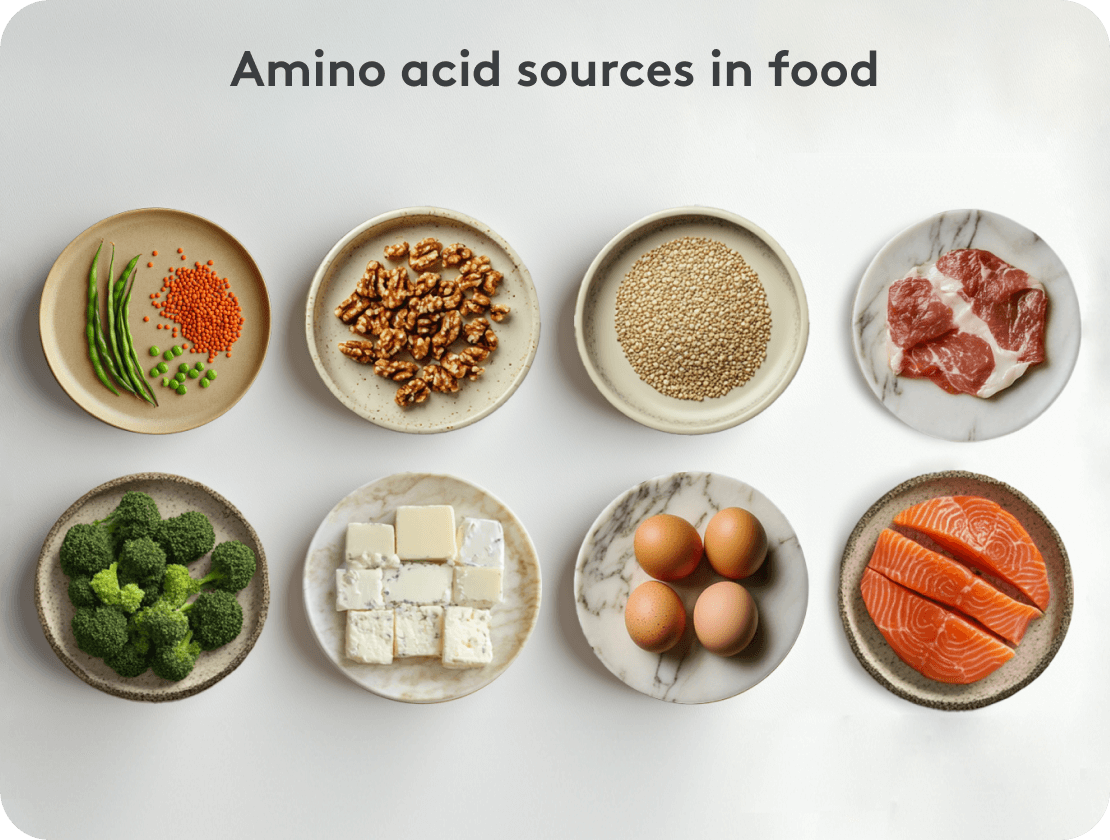

Good to know: For the optimal effect of some amino acids, magnesium, vitamin B3 and vitamin B6 must also be present in sufficient quantities.
The non-essential amino acids are not essential for life. The body can produce them itself from other amino acids or molecules. They therefore only need to be consumed with food to a limited extent. However, how much the body can produce depends on the intake of macronutrients away.
Complete and incomplete proteins
In the context of nutrition, it is important to know the difference between complete and incomplete proteins. A complete protein contains all essential amino acids in sufficient quantities. When we talk about a complete amino acid profile in foods, we mean that the vital amino acids are made available to the body in sufficient quantities. This is not the case with incomplete proteins.
Therefore, you should either consume a combination of different incomplete proteins or complete proteins. For example, a vegan or vegetarian diet often contains several incomplete protein sources. In this case, it is advisable to combine different plant-based protein sources so that all amino acids are consumed.
Supplementing amino acids – but how?
In certain phases of life or with certain diets, a high-protein diet can be difficult to implement. If you are vegan or vegetarian, for example, it can be useful to supplement amino acids. Competitive or recreational athletes and people who are currently making greater efforts due to growth phases or illness can benefit from a supplement.
When supplementing, the body is relieved of the burden of its own synthesis and sufficient supply is ensured. However, there are a few points that you should consider when taking it.
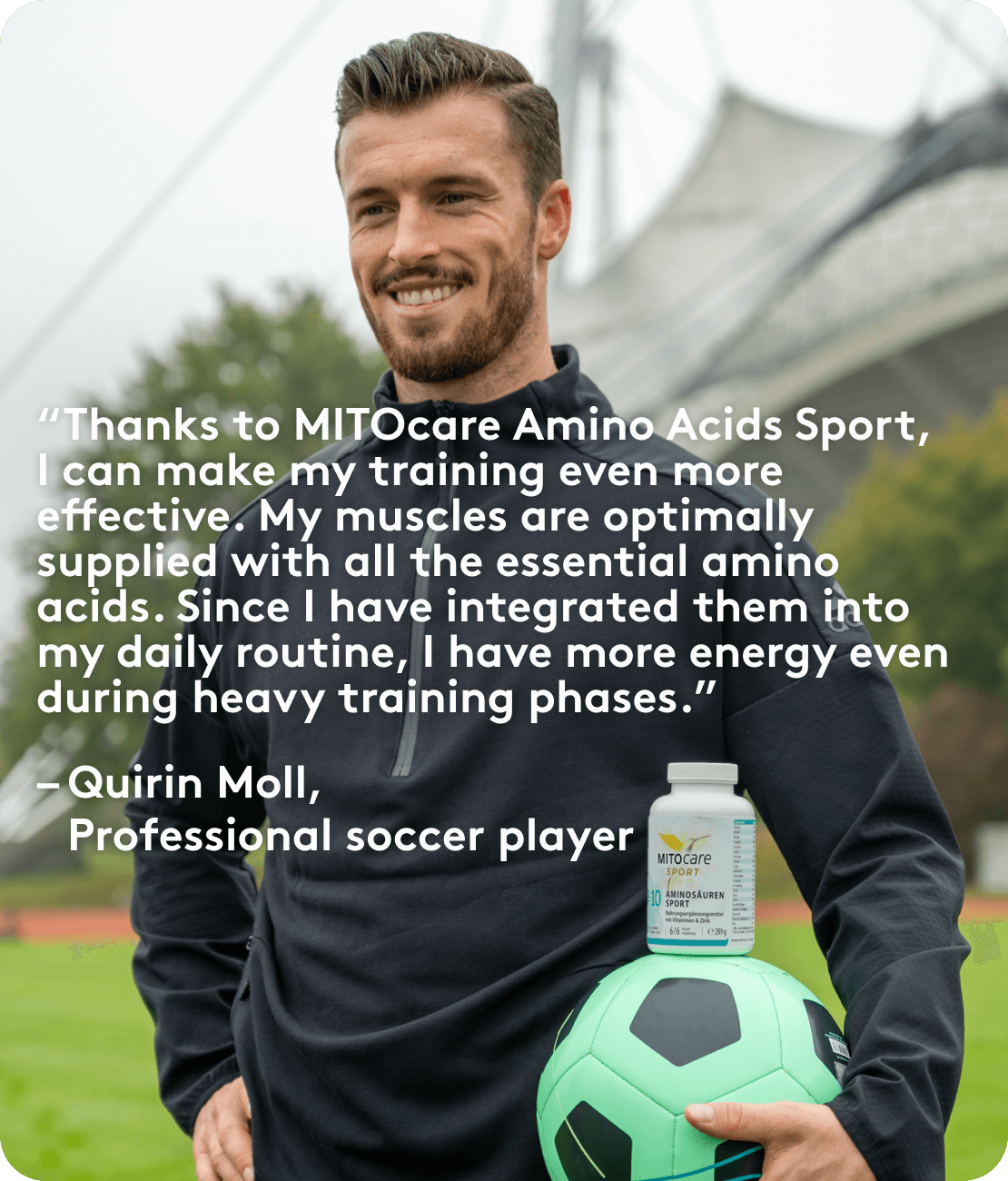

Protein powder: Is it the same as amino acids?
The answer here is clearly no. Protein powders contain isolated proteins from a food. The body breaks down these proteins in the stomach and small intestine just like other dietary proteins and then absorbs short pieces and individual amino acids.
The amino acids can only be used much later than when taking free amino acids. With a free amino acid, nothing needs to be broken down; it can be absorbed directly. So if the focus is on supplying your body with amino acids, products with free amino acids are the best option.
The primary purpose of protein powders is not to supply your body with amino acids, but rather as a source of nutrition that provides good satiety for building muscle or similar goals. For athletes, taking protein powders can therefore be very helpful. If it's purely about amino acids, a product with free amino acids is the better choice. You can also combine both, but you should take the products at different times.
EAA or BCAA?
There are many different ways to obtain amino acids through dietary supplements. Two fundamentally different ways are EAAs (Essential Amino Acids) and BCAAs (Branched-Chain Amino Acids).
- BCAAs have long been a hot topic, especially in the sports sector. They contain only three of the eight essential amino acids, but these are particularly special due to their branched structure: valine, leucine and isoleucine are metabolized less in the liver and more in other tissues such as the muscles. Athletes hope that they will prevent muscle breakdown and delay muscle fatigue. Whether the three amino acids really achieve this effect is controversial, however.
- In addition to BCAAs, EAAs also contain all other essential amino acids in an amino acid complex. Taking this supplement primarily promotes a balance of amino acids.
If you are looking for an answer to the question whether BCAAs or EAAs are better, the answer is clear: EAAs. They contain more amino acids and are therefore more effective and balancing.
Consider cofactors for amino acid metabolism
Sometimes the body has to convert one amino acid into another. This is necessary, for example, when the organism has to produce essential amino acids from non-essential ones. Transaminase is involved in this amino acid metabolism . This is an enzyme that uses a special cofactor: vitamin B6.
However, it is not just any form of B6 that is used, but rather pyridoxal phosphate , which you can find on the back of some food supplements. This form of vitamin B6 is also important in the conversion to biogenic amines such as adrenaline and dopamine. It is the bioactive form of vitamin B6 that has an effect on the metabolism.
Vitamin B6 is therefore an important vitamin for the conversion of certain amino acids into other amino acids. Other vitamins and minerals such as vitamin B12 are required for individual additional tasks of the amino acids, but vitamin B6 is the basic cofactor that should be included in every EAA product.


Our recommendation for handling amino acids
When taking essential amino acids, it is best to make sure that they are complete and that bioactive vitamin B6 is used as pyridoxal-5-phosphate. You can usually tell whether a dietary supplement is good or not by the quality of the raw materials.
For athletes: The best time to take amino acids is directly before, during or after strength training. Otherwise, we recommend not taking the products with your meals, as the protein contained in food can reduce absorption.
If our article has motivated you to make your training even more efficient with the help of vitamins, micronutrients, etc., there are more helpful articles waiting for you in our blog on the topic of exercise.
This article is based on carefully researched sources:
Sources & Bibliography
- McCully KS (1996). Homocysteine and vascular disease. Nature medicine , 2 (4), 386–389
- Wu G. (2009). Amino acids: metabolism, functions, and nutrition. Amino acids, 37(1), 1–17
- Minich DM, Brown BI (2019). A Review of Dietary (Phyto)Nutrients for Glutathione Support. Nutrients, 11(9), 2073
- Semba, Richard D. et al. (2016). Child Stunting is Associated with Low Circulating Essential Amino Acids. eBioMedicine, Volume 6, 246-252
